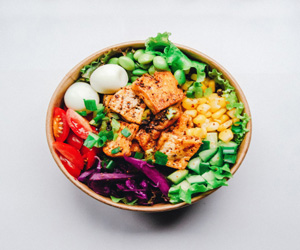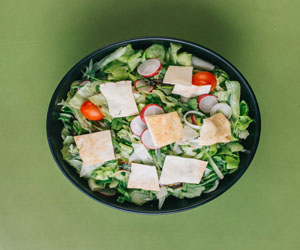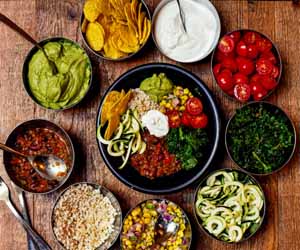


Crafting The Perfect Cup

Brewing techniques represent the heart and soul of coffee and tea culture, offering a journey through history, geography, and the fine balance of science and art. Whether you're an aspiring home barista, a seasoned coffee enthusiast, or a dedicated tea connoisseur, mastering brewing techniques is the key to crafting the perfect cup.
Coffee Brewing Techniques
Drip Brewing: The classic drip coffee maker is a staple in many households. Ground coffee is placed in a filter, and hot water is dripped over it, allowing the liquid to flow through the grounds, extracting flavors along the way. It's a simple and consistent method.
Pour-Over: Pour-over brewing is a manual and more nuanced approach. Hot water is poured over a bed of coffee grounds in a circular motion, resulting in even extraction. The technique allows for a high level of control over variables like grind size, water temperature, and pouring rate.
French Press: The French press, also known as a press pot or plunger pot, uses a metal or mesh sieve to separate coffee grounds from the liquid. The grounds steep in hot water, and the plunger is used to press them to the bottom, resulting in a full-bodied cup.
Espresso Brewing: Espresso is a concentrated coffee beverage made by forcing hot water under pressure through finely-ground coffee. It requires precision in variables like grind size, water temperature, and pressure to produce a shot with a rich crema and complex flavors.
AeroPress: The AeroPress is a versatile, portable brewing device. Coffee grounds steep in hot water, and gentle pressure is applied to extract the liquid. This method is known for its quick brew time and clean taste.
Tea Brewing Techniques
Western-Style Brewing: The most common method in the Western world, Western-style brewing involves steeping tea leaves in hot water for a set amount of time. Variations in water temperature and steeping time can be adjusted to achieve the desired strength and flavor.
Gongfu Cha: This traditional Chinese method involves a smaller vessel and multiple short steepings. It allows for a more controlled extraction, revealing the full spectrum of a tea's flavors over several infusions.
Japanese Tea Brewing: Japanese tea brewing often involves a precise process of measuring tea leaves and water. It is particularly important when brewing matcha, a finely ground powdered green tea.
Cold Brewing: Cold brewing is a gentle method that involves steeping tea leaves in cold water over an extended period, usually several hours or overnight. It results in a smooth, mellow, and less bitter tea.
Craftsmanship And Precision
The beauty of brewing techniques lies in the meticulous craftsmanship they require. It's not merely a matter of putting tea leaves or coffee grounds into hot water; it's about controlling variables like water temperature, steeping time, and extraction methods. Precision ensures the flavors are extracted correctly and that each cup is a masterpiece.
A Culinary Journey
Brewing techniques also represent a culinary journey. From the unique characteristics of coffee beans from different regions to the various types of teas, every cup tells a story of terroir, traditions, and cultures. Exploring brewing techniques is like embarking on a worldwide tour of flavors and aromas.
Brewing techniques are a testament to the rich tapestry of coffee and tea culture. They bridge the gap between tradition and innovation, science and art. Whether you're perfecting the art of the pour-over or embracing the delicate dance of gongfu cha, each technique offers a unique path to discovering the depths and nuances of your favorite brew. So, raise your cup and savor the journey, one meticulously crafted sip at a time.
The Delight Of Wholesome Recipes
 Nutrient-Rich Ingredients: Wholesome recipes are characterized by their reliance on nutrient-rich ingredients. Fresh fruits and vegetables, lean proteins, whole grains, and heart-healthy fats take center stage. These ingredients are packed with essential vitamins, minerals, and antioxidants that support our health and well-being.
Nutrient-Rich Ingredients: Wholesome recipes are characterized by their reliance on nutrient-rich ingredients. Fresh fruits and vegetables, lean proteins, whole grains, and heart-healthy fats take center stage. These ingredients are packed with essential vitamins, minerals, and antioxidants that support our health and well-being.
Balanced Nutrition: One of the key features of wholesome recipes is their focus on balanced nutrition. These recipes aim to provide a harmonious blend of macronutrients and micronutrients, ensuring that our bodies receive the fuel they need to function optimally. The balanced approach contributes to sustained energy levels and better overall health.
Simplicity And Freshness: Wholesome recipes embrace the beauty of simplicity. They rely on the natural flavors and textures of ingredients without overcomplicating dishes with excessive additives or processed foods. This simplicity not only makes the recipes easier to prepare but also allows the purity of each ingredient to shine through.
Culinary Creativity: Wholesome recipes are not limited to bland or boring dishes. In fact, they are an opportunity for culinary creativity.




The Cornerstones Of Health And Wellness
 The Essence Of Nutrient Density: Nutrient-rich foods are characterized by their high nutrient density. This means they pack a significant amount of essential nutrients per calorie, giving you the most "bang for your buck" in terms of health. These foods are not empty calories but are abundant sources of vitamins, minerals, antioxidants, and other valuable compounds.
The Essence Of Nutrient Density: Nutrient-rich foods are characterized by their high nutrient density. This means they pack a significant amount of essential nutrients per calorie, giving you the most "bang for your buck" in terms of health. These foods are not empty calories but are abundant sources of vitamins, minerals, antioxidants, and other valuable compounds.
Variety Of Nutrient-Rich Foods: The world of nutrient-rich foods is diverse and versatile. It includes:
Fruits And Vegetables: Fruits and vegetables are teeming with vitamins, minerals, and dietary fiber. They offer a wide range of colors, flavors, and textures, making it easy to incorporate them into your daily meals.
Whole Grains: Whole grains like brown rice, quinoa, and whole wheat provide complex carbohydrates, fiber, and essential nutrients that support sustained energy and overall health.
A Delicious Journey Through Nature's Bounty
 Flavors At Their Peak: Foods that are in season are at their peak in terms of flavor and nutritional value. These foods are harvested at the perfect time, allowing them to develop their full flavor potential. A ripe, in-season tomato, for example, bursts with flavor that is unparalleled in taste when compared to its off-season counterpart. The taste of seasonal produce is a testament to the magic of nature.
Flavors At Their Peak: Foods that are in season are at their peak in terms of flavor and nutritional value. These foods are harvested at the perfect time, allowing them to develop their full flavor potential. A ripe, in-season tomato, for example, bursts with flavor that is unparalleled in taste when compared to its off-season counterpart. The taste of seasonal produce is a testament to the magic of nature.
Nutritional Benefits: Seasonal eating offers a variety of health benefits. Seasonal fruits and vegetables are rich in essential vitamins, minerals, and antioxidants. Since they are picked at their peak, they often contain more nutrients than out-of-season produce that has been transported long distances or stored for extended periods.
Environmental Sustainability: Embracing seasonal eating also aligns with eco-conscious living. When you choose foods in season, you reduce the need for long-distance transportation and energy-intensive methods of preservation. This, in turn, lowers your carbon footprint and supports local agriculture. It's a sustainable approach that promotes environmental health and resilience.
The Art Of Elevating The Dining Experience
 The Ingredients Of Culinary Excellence:
The Ingredients Of Culinary Excellence:
Culinary excellence encompasses a blend of key elements, all of which come together to create unforgettable dining experiences:
1. Creativity And Innovation: At the heart of culinary excellence is creativity. The most celebrated chefs and culinary artists are known for pushing the boundaries, experimenting with flavors, and devising new ways to present familiar ingredients. Innovation drives the evolution of culinary arts, leading to exciting and diverse dishes.
2. Exceptional Skill And Technique: Culinary excellence demands unwavering dedication to honing one's skills. Mastery of various cooking techniques, from sous-vide cooking to knife skills, is essential for chefs and culinary professionals. The artistry in mastering the craft is what sets culinary excellence apart.
From Novices To Seasoned Chefs
 For those new to the culinary world, there is an abundance of resources available to help you learn the basics. Cookbooks, online tutorials, and cooking classes are fantastic tools for building a strong foundation. These resources offer clear and concise instructions that empower novices to recreate delectable meals with ease and confidence.
For those new to the culinary world, there is an abundance of resources available to help you learn the basics. Cookbooks, online tutorials, and cooking classes are fantastic tools for building a strong foundation. These resources offer clear and concise instructions that empower novices to recreate delectable meals with ease and confidence.
Exploring New Horizons: As you gain confidence and experience in the kitchen, culinary expertise opens the door to endless possibilities. You can start experimenting with different ingredients, cooking techniques, and flavor combinations. Trying new recipes and exploring various cuisines becomes a source of joy and adventure. The thrill of creating something new and delicious becomes the driving force for many home cooks.
Healthy Eating And Nourishing Meals: Culinary expertise is not just about creating indulgent dishes. It's also about making informed choices for a healthier lifestyle. From scrumptious breakfast options to satisfying lunches and delightful dinners, a culinary journey can incorporate nutritious and wholesome recipes that enhance your well-being. This ensures that everyone can enjoy the benefits of cooking, from improved health to enhanced culinary skills.
Family And Loved Ones: Cooking is a universal language of love and care. Whether you are cooking for yourself, your family, or your friends, the ability to create delicious and nutritious meals brings people together. Sharing homemade dishes is a source of joy, bonding, and togetherness, making culinary expertise a gift that keeps on giving.